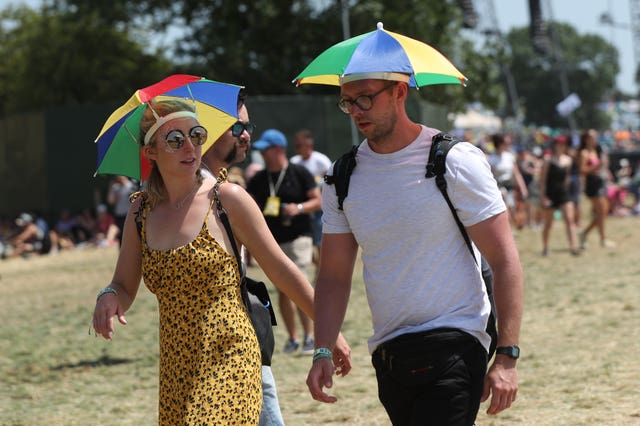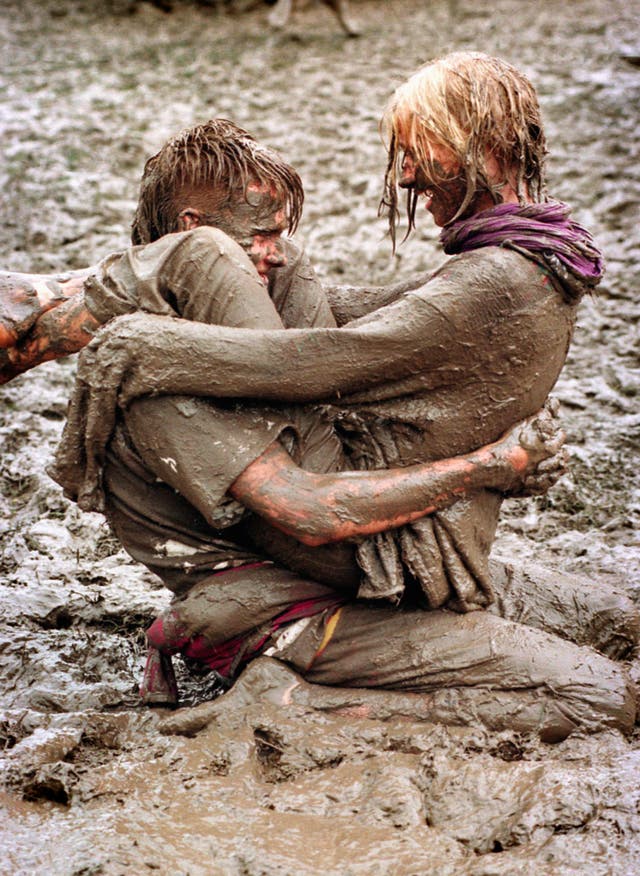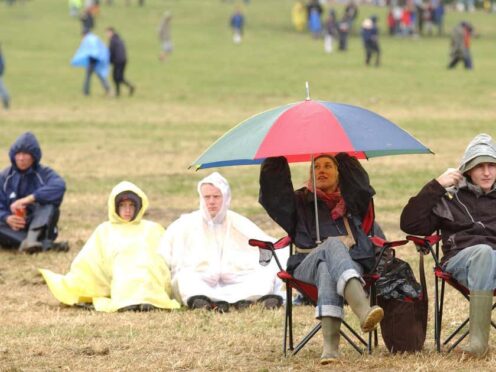People heading to this year’s Glastonbury Festival are likely to be spared both sizzling temperatures and washed-out fields, with forecasts suggesting no weather records will be broken.
Temperatures will peak at 25C on Thursday before getting steadily cooler each day, ending at 16C on Sunday, the Met Office said.
Conditions are likely to be unsettled during the festival, with a chance of rain on Friday, Saturday and Sunday.
A spell of persistent rain from Friday evening into Saturday is possible, while a blustery breeze will make it feel much cooler by the end of the weekend.

Most Glastonbury festivals have seen a mixture of sunshine and showers, archive figures show.
There have been only nine rain-free festivals since the event was first held in 1970.
These include 1970 itself, the 30th anniversary in 2000, and 2019 – the most recent festival to date.

The 2007 festival holds the record for the single wettest day, when 60.1mm of rain fell at the nearby weather station at Rodney Stoke.
The lowest minimum temperature has been a chilly 4.2C, recorded at Yeovilton weather station in 1987.
In contrast, the highest maximum temperature was recorded five years ago in 2017, when the Rodney Stoke weather station reached 31.2C.
The strongest gusts of wind were recorded in 1985 and 1987, when 41mph was reached at Yeovilton.
Even if there is little rain during the festival itself, heavy downpours in the days beforehand can turn the site into a mud-bath.

This is what happened in 1997 and 2016, leading to wretched conditions for most people – although some refused to let it spoil their enjoyment and chose instead to have a glorious wallow in dirt.
With little rain forecast ahead of this year’s festival, a mud-bath on a similar scale looks unlikely.
But showers over the weekend might leave festival-goers feeling rather damp.
All figures have been compiled by the PA news agency from data published by the Met Office.
